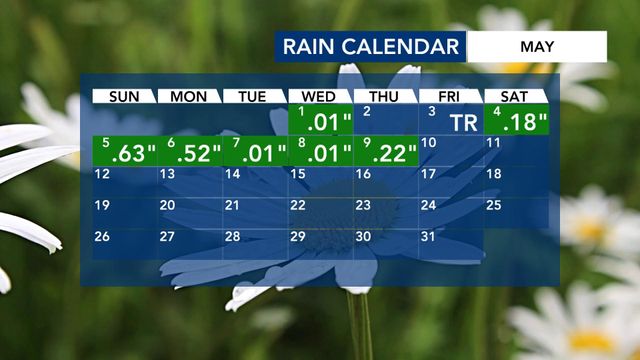What you need to know about food allergies
May is Food Allergy Awareness Month, and food allergies are on the rise.
The FDA lists milk, eggs, fish, shellfish, tree nuts, peanuts, wheat, soybeans and sesame as the most common culprits of food allergies and requires strict labeling on packages, but you won’t always find that packaging at parties and potlucks.
WRAL 5 On Your Side’s Keely Arthur sat down with allergist-immunologist Dr. Jonathan Romeo of Allergy Partners of the Triangle to talk about what families with and without food allergies can do to keep everyone safe and healthy.
This conversation was edited for easier understanding.
Q: How common are food allergies in children?
A: Very common. Every classroom probably has about one or two children that have a food allergy. Around 1 in every 13 kids.
Q: What about adults?
A: It’s not as common for adults to develop a food allergy. However, about 10 percent of the population is walking around with a food allergy. Some have had it since childhood, and some develop it as an adult.
Q: How do you test for food allergies?
A: There are a few ways to get tested. Skip an at-home test and visit a doctor, instead. Food allergy testing has a really high false positive rate. It’s somewhere around 50 to 60 percent. So, if someone is just getting a testing panel done without somebody interpreting it, sometimes they can be told they are allergic to something they may not be allergic to.
Q: What do you need to know to make an official diagnosis?
A: If the patient eats something and they’ve never had any issues with it then I would not call them allergic, almost regardless of what the test says. You really want to have a history of having an allergic reaction that tends to be immediate to diagnose the person with a food allergy.
Q: Are more children allergic to food now than in previous decades?
A: Yes. Between the late 90s and early 2000s there was a 50 percent increase, and an almost triple increase in children with food allergies.
Q: Why are more people becoming allergic to food?
A: There’s something called Hygiene Hypothesis. It’s the idea that as humans live in cleaner environments their immune systems aren’t forced to be as strong which can make reactions to allergens more likely.
Q: As more children become allergic to foods is the guidance changing?
A: Yes, in one study looking at children with a higher likelihood of developing an allergy to peanuts -- children who were exposed to peanuts around 6 months old had a fourfold reduction in the incidents of peanut allergy compared to the group that waited until 4 years old. So, that turned the guidance on its head.
Q: What is the best line of defense if my child has a food allergy?
A: An epinephrine pen.
Q: Are there any downsides to using an epinephrine shot?
A: Not really. Epinephrine is produced by the body. It’s a natural hormone, it’s our fight or flight response, it’s adrenaline. So, when you get an adrenaline surge it is essentially what epinephrine is. I tell my families all the time that I would rather them administer a child epinephrine 10 times and not need it than not give it that one time they need it.
Q: If my child doesn’t have food allergies, how can I best support kids that do?
A: Just have awareness and realize that just because you and your child can eat anything without any risk, others may not be as fortunate.
If you are hosting an event have awareness of the people who you are serving and try to make sure you are accommodating for any food allergies that someone might have. There are practical limits. If you are having a large party of course it’s hard to know what everyone’s dietary needs are. That’s why it’s so important for individuals to be very vigilant and check as much as possible.










